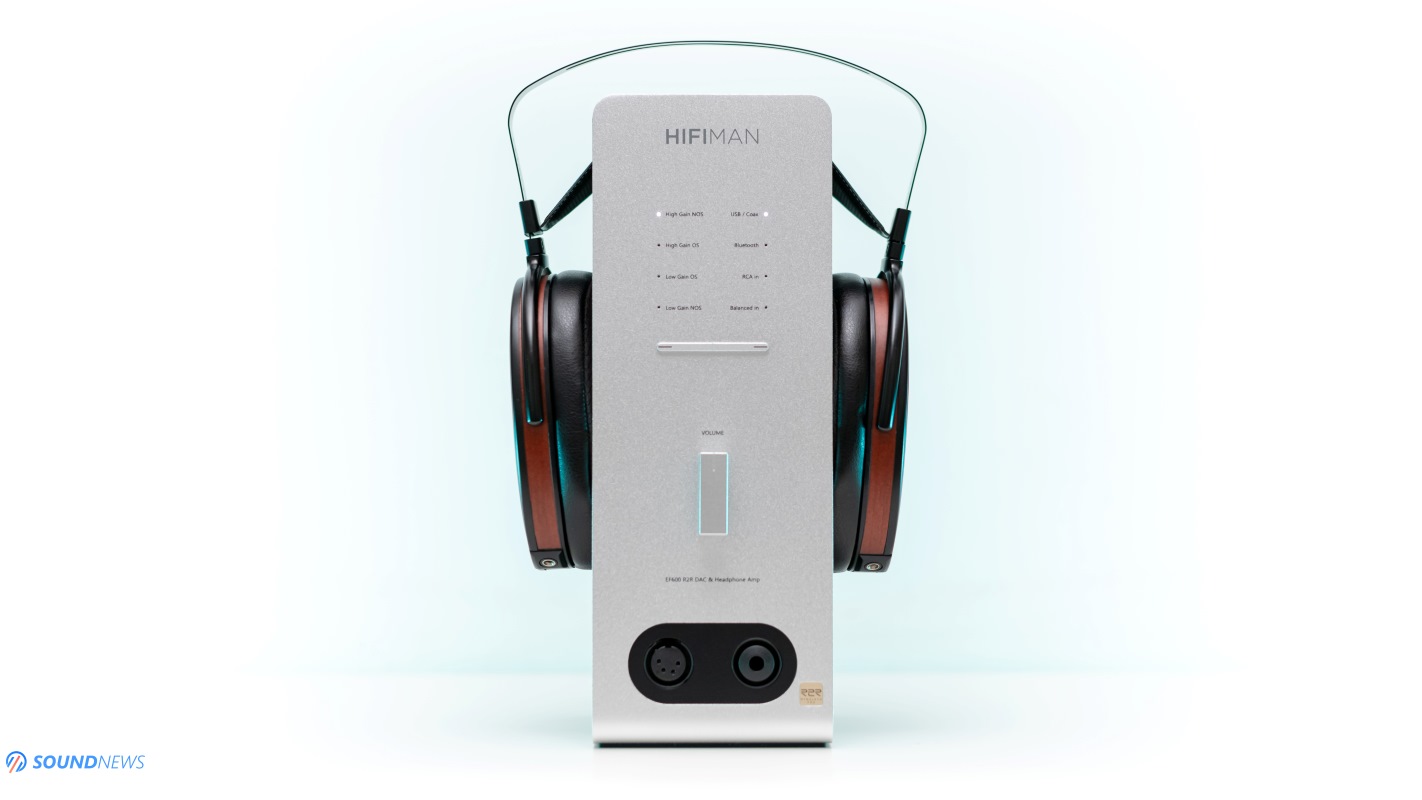A Deep Dive into the HiFiMan EF600 R2R DAC / Headphone Amp / Headphone Stand

Planar magnetic headphones were introduced in 1972 by Wharfedale, and later picked up by several Japanese manufacturers, but for reasons unknown, they didn’t spread across the land as wildfires. About a decade and a half ago, HiFiMan together with a band of renegades launched a new era for planar magnetic headphones, expanding the small head-fi world into a bigger one. Nowadays, planar magnetic technology isn’t found only in desktop headphones or massive speakers that require special equipment to unleash their potential, but even in portable audio. True-wireless IEMs were blessed with such technology and even a few gaming headsets of Sony and Audeze are using such drivers.
In 2010, HiFiMan released the HE-6 which instantly became a hit, going down the history books as a legendary headphone that kickstarted the planar-mafia business. Even today, the early 4-screw version of the HE-6 is considerably more valuable than the later 6-screw model, as the earliest models are (much) rarer. After the release of HE-6, the world of headphone amplifiers forever changed as what worked well with flagship dynamic headphones of that moment as Sennheiser HD800 and Beyerdynamic T1, didn’t work that well with the current hungry HE-6. I remember having the same issue, a freshly acquired and later heavily modded Woo Audio WA6 Special Edition wasn’t able to drive well the HE-5, let alone the HE-6. HiFiMan knew about the changes that would soon be coming to headphone amplifiers, starting first with their fully discrete EF6 headphone amp, specially tailored for the HE-6. Weighting 10.75 kilos a piece (24 pounds) and delivering up to 5 Watts of pure Class-A goodness into 50 Ohms, EF6 was a beast of an amplifier.
Fast forward another decade and HiFiMan releases the EF400 as a small and affordable spiritual successor to the EF6, drawing power from a customized linear transformer and delivering a healthy dose of current. On top of that, newly developed R-2R DAC modules made it considerably more interesting to minimalist audiophiles, killing two birds with one stone.
The minimalist movement is strong nowadays and that can be seen in all-in-one units that pack so much technology that are still being released almost every month. HiFiMan decided to further refine everything we knew about EF400 by adding more power to the whole affair, improving the R2R network by going with a Himalaya PRO nickname, adding a Bluetooth antenna for the low-fi streaming heads, and also making it look like a headphone stand, trying to kill four birds with a single release. Naturally, the price point went higher from $529 to $799, but so did sound performance on all fronts, and let’s check if EF600 can stand a chance versus modern DAC/Amp combos not only with their own sets of headphones but with a plethora of dynamic and planar headphones. Let’s dive in!
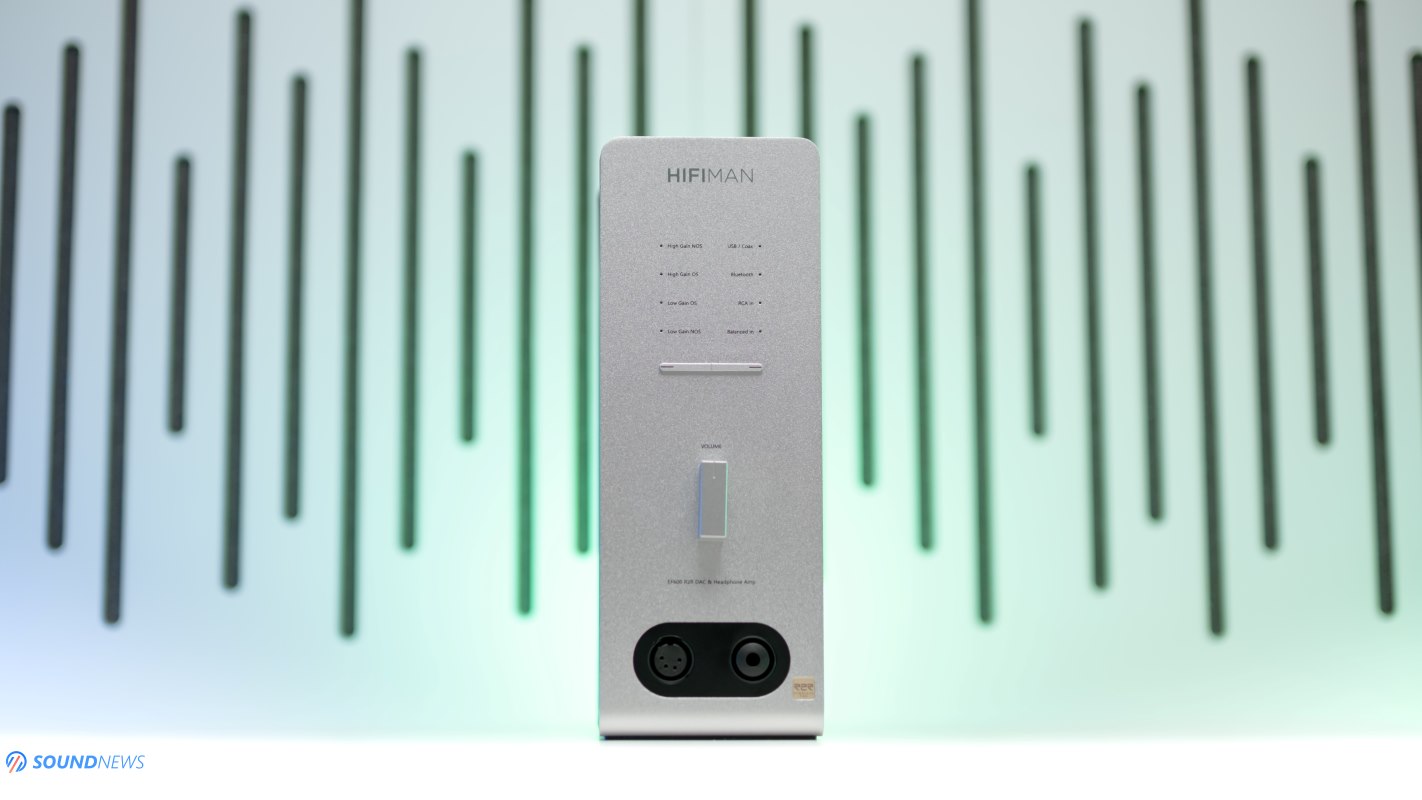
Design & Build Quality
As a HiFi brand, HiFiMan has some of the brightest engineers, crafting some of the best headphones out there that use planar and electrostatic drivers. Seeing linear transformers, custom-developed R-2R networks built from tens of resistors, and fully discrete analog and amplifier stages, it’s clear to me that these guys have the know-how to develop world-class electronics as well. However, it appears that they didn’t put a big accent on the look of their devices, choosing function instead of form at the end of the day. I don’t blame them for that, as for people like me, sound quality is considerably more important. I knew beforehand what I was going to receive, so when I started unwrapping the EF600, I started understanding the reasons behind its look. First of all, it occupies minimal desktop space and that tells you a guy who recently bought an expensive rack for his headphone setup, as my wired streamer, music server, DAC, and headphone amplifier occupied all of my desktop space. It became a real challenge powering all of that, let alone beautifully arranging them on the table. The ordeal was so big that I went with an audio rack close to my office, that would save precious desktop space. With EF600, you no longer have such issues, as its height isn’t as important as its base surface. Measuring only 10.4 cm wide and 16.5 cm deep, this thing occupies less surface than some of my portable DAC/Amp combos. The unit is made out of CNC machined aluminum with soft matte black plastics wrapping it all around. The headrest area is soft and follows the lines of their planar headphones, even Ananda NANO and Arya Organic have enough resting space.
Since we are talking about a high-current fully discrete amplifier that draws power from a linear transformer, some heat is generated from all of that, but thanks to clever heat dissipation mechanics that optimized the airflow, the unit gets marginally warm after several hours of use. We have wide air intakes at the bottom that bring fresh air and air vents on top that release hot air outside its case, preventing the unit from overheating. Please don’t put it on top of hot electronics and leave some space around it for better ventilation and service life. Its form is a bit unusual, but it all makes sense, as space can be a commodity for some. Working as a DAC/AMP combo with Bluetooth functionalities AND as a headphone stand, makes it so much easier to integrate in super tight spaces, so kudos to HiFiMan for that!
The only thing that bothers me as a hardcode volume knob aficionado is its rectangular volume knob that wiggles a little. You can swap it with a regular volume knob, but on second thoughts, the sound would remain the same, so why bother?
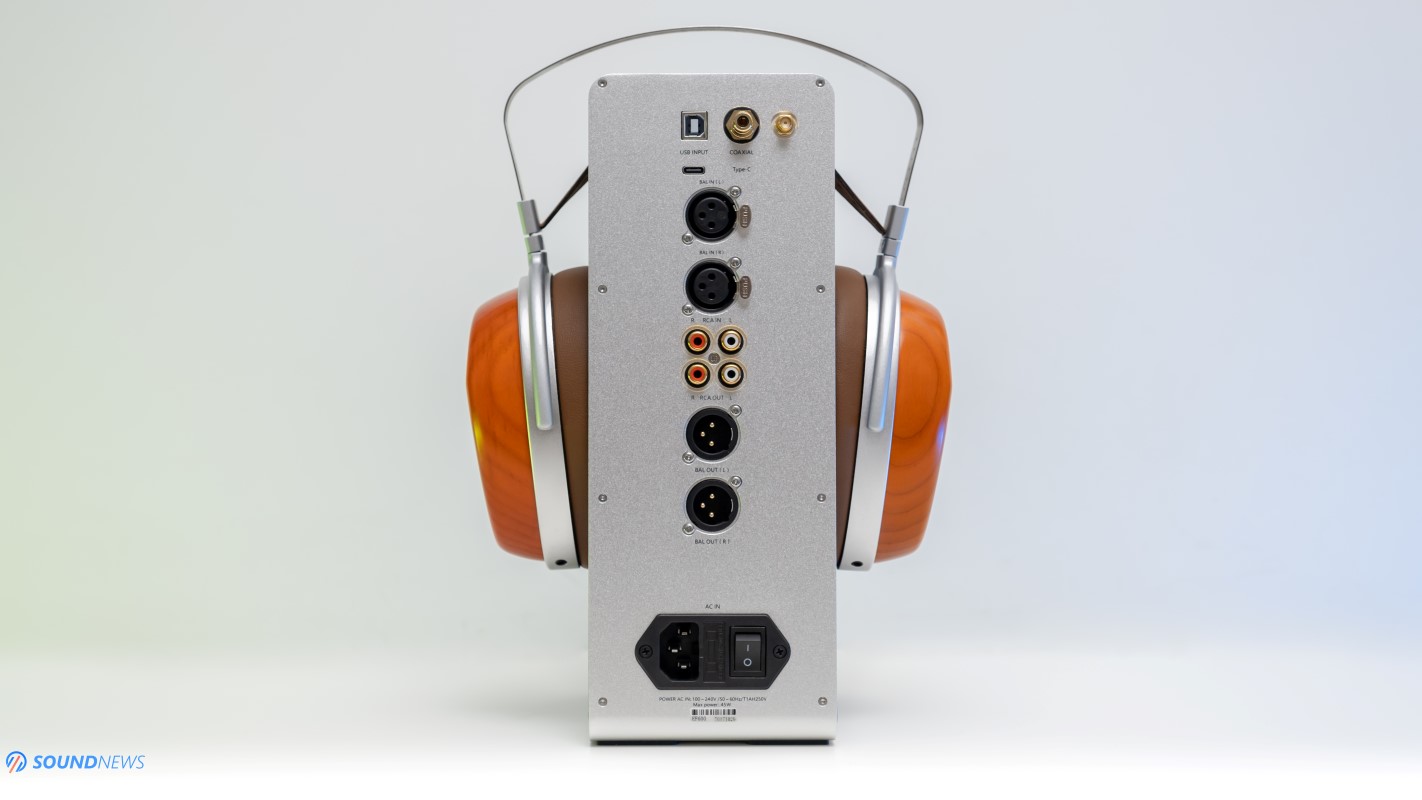
Controls & I/O
HiFiMan went with a symmetrical face plate and the perfectionist in me approved this design decision. I’m making beer sacrifices to Odin, that one day, SMSL Audio will also have symmetrical-looking face plates. I’m not an OCD guy, but I’m becoming one when I have SMSL gear on my table, but luckily that is not the case with HiFiMan gear. From top to bottom, we have a few low-intensity LED lights and two selectors; one controls the gain and the working mode of its R2R ladder DAC (Non-oversampling or Oversampling), and the other lets you choose a digital or analog input. A volume knob follows and two headphone jacks are coming in 4-pin XLR balanced and 6.35mm single-ended flavors. It’s a simple yet effective faceplate without any strings attached.
On its back we have four digital inputs, including a USB Type-C input, suggesting that it will work with smart devices. What’s surprising and pleasing is that we are getting RCA and XLR inputs and a mirrored symmetry of analog outputs, suggesting that EF600 can work as a stationary headphone amplifier or as a DAC-only unit. The feature set of EF600 thus expands drastically as it isn’t only a DAC and headphone amplifier combo, but also a standalone DAC or headphone amplifier, slightly expanding its use cases. We have a power switch and an AC socket, plus we have a 115/230V voltage selector on the bottom of the unit. Please make sure to have the right working voltage selected before powering on the unit.
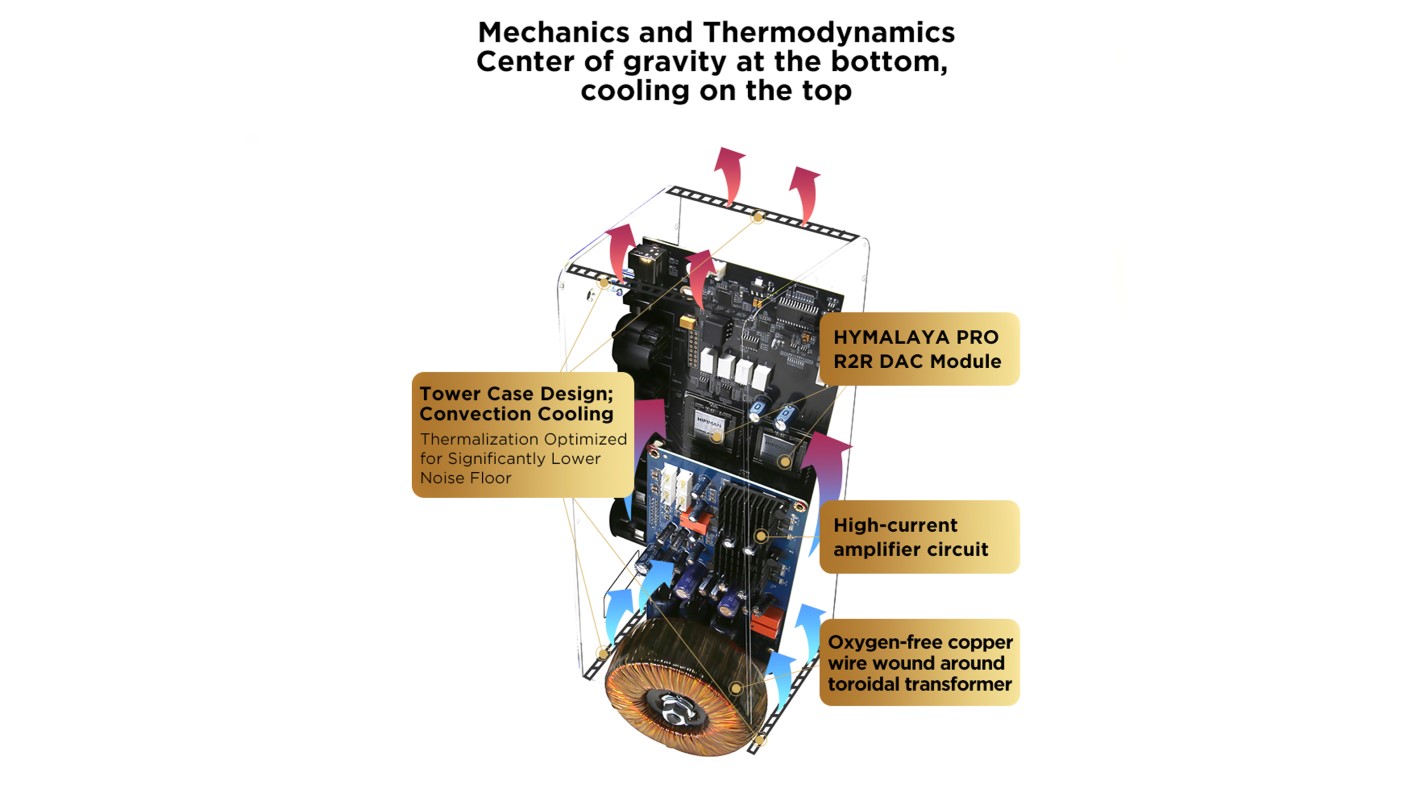
Under its Hood
First things first, EF600 isn’t just a headphone amplifier, but so much more. It’s also a DAC and quite a special one at that, and a Bluetooth receiver.
When HiFiMan released the EF400 some two years ago, people endorsed it as an outstanding-sounding all-in-one unit not only for its fully discrete amplifier section that ditched operational amplifiers but also for its natural-sounding R-2R ladder DAC section. HiFiMan further tuned the Himalaya DAC architecture, arriving at their second generation R2R ladder DAC, called Himalaya PRO. A few online reviewers called them Himalaya PRO DAC chips as they didn’t quite understand how R2R ladder DACs are working. We don’t have off-the-shelf DAC chips in here, but a ladder/network of resistors that use two resistive values. One resistor has the base value “R” and the second one has twice the value of the first resistor “2R” regardless of how many bits are used to make the ladder. Input voltages are then applied to the ladder at various points along its length and the more input points we have, the better the resolution of the R2R ladder gets. I have a few DACs around the house, but my personal favorite is an R2R ladder DAC called Rockna Wavedream Signature XLR which works by the same principles as the EF600. What’s interesting about the Himalaya PRO is that they achieved a lower measured distortion (THD), a higher signal-to-noise ratio (a higher dynamic range), and a subjective sweeter sound compared to the first-gen Himalaya DAC, for which they are proud.
The EF600 is also a headphone amplifier and a great one at that, using discrete components (transistors, resistors, diodes, etc) to amplify the analog signal, adding current to the voltage intake, creating power needed to drive and control the drivers of our headphones. EF400 already had a powerful amplifier section, but EF600 is more so, outputting up to 5.12 Watts per channel into a 32 Ohm load via its 4-pin XLR output and up to 1.8 Watts per channel into a similar load via its 6.35mm jack. HiFiMan isn’t mentioning the power output at higher impedances, as their units are mostly designed for planar magnetic headphones, which generally don’t have very high impedances.
The power supply of the EF600 is located on the bottom and except for good power filtering and DC voltage regulation, the whole unit is powered by a massively oversized 100-watt OFC toroidal transformer. Linear, filtered and regulated toroidal transformers are mostly found in high-end audio applications and I’m glad to see one in here as well. A 100-watt transformer is slightly overkill for the EF600, but it will surely leave tons of headroom for wild dynamic swings.
Lastly, we have the highest-performance Bluetooth receiver on board, the famous Qualcomm QCC 5125 which supports all the best codecs available today, including the LDAC, AptX-HD, and AptX Low Latency. Add a Bluetooth antenna that works as a signal booster and you get a powerful BT receiver that will lock on the signal even with two concrete walls in between the sender and the EF600.
Overall, it follows every rule a great-sounding DAC and headphone amplifier combo should have and I’m glad that it isn’t inflicting a critical hit to our wallets with its $799 asking price.
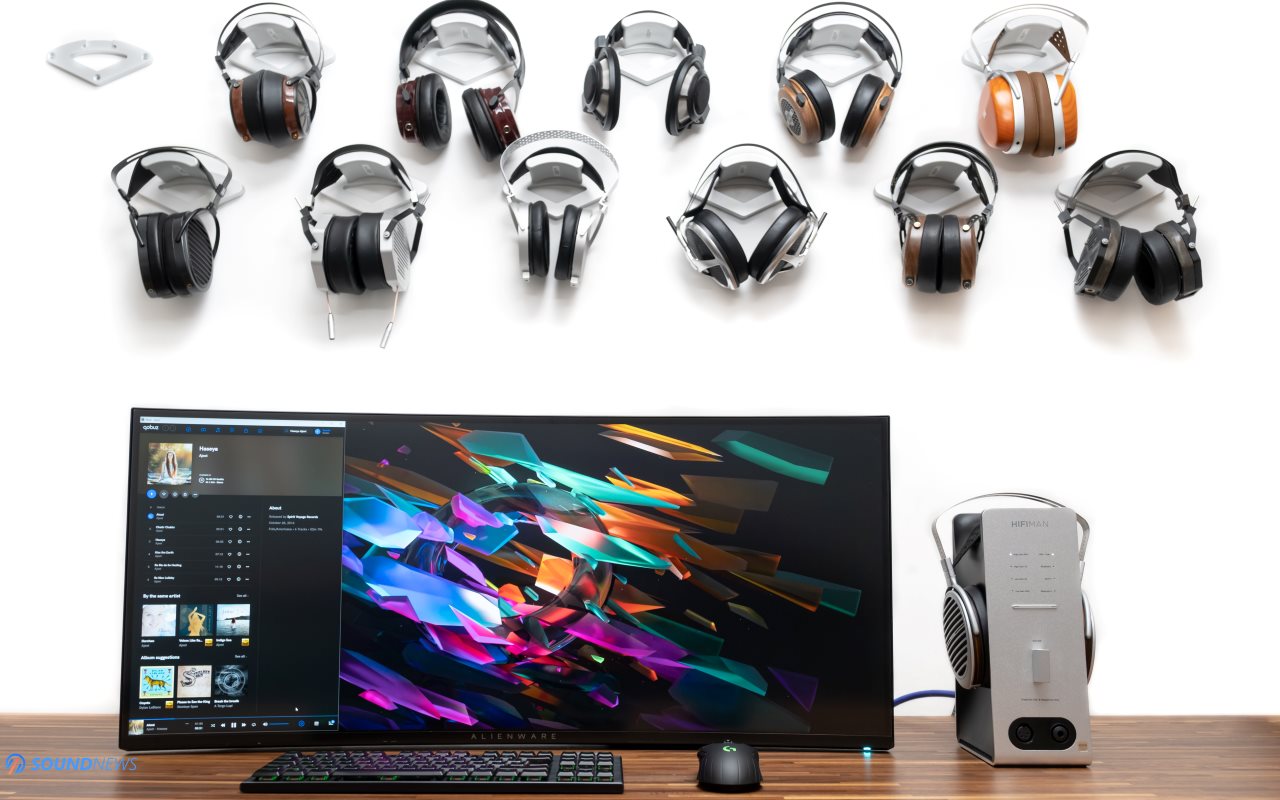
Sound Performance
I. Preliminary Sound Impressions
First of all, I would like to address the heating issues that a few reviewers brought to the surface. Instead of telling you that it was warm or hot, I decided to use a professional Bosch infrared thermo-detector. I let it play for 6 hours straight via high gain together with a pair of HiFiMan Susvara exactly at its noon volume position, stressing it with bass-intensive music for half a day. At a room temperature of 25 °C, at the bottom of the unit where the linear transformer is located, I’ve got a cool 30.5 °C. Exactly in the middle of the unit where the earpads are usually resting, I’ve got 38 °C and at the very top, the hottest spot yielded a temperature of 47.2 °C. Not only this is a cool running headphone amplifier that isn’t limiting the lifespan of its internal components, but it’s quite probably the coolest fully-discrete amplifier that I have come across. Putting my hand on the hottest spot wasn’t something that I would call hot, unbearable, or headphone-damaging. As a small comparison, the lateral heatsinks of the Trafomatic Primavera reach a temperature of 68 to 72°C on average, getting hot and unbearable in the summertime, hence using the Enleum AMP-23R instead as my reference headphone amplifier for about four months per year.
Although many of you will be using the EF600 directly with a mobile or desktop PC/MAC which is fine by me, I’ll be using it with a dedicated Roon server/Music server called Rockna Wavedream NET 4TB, which I’m sure with push its performance to the maximum. I don’t recommend getting an end-game wired/wireless streamer with EF600 in particular, but a decent one that won’t break the bank should further elevate its performance. If you want my highest recommendation of the moment, then look no further to an EverSolo DMP-A6, ideally with an LHY Audio x Beatechnik LPS-A6 (here it is) for nicer dynamics, better flow, and more natural sound reproduction.
With that out of the way, let’s focus on EF600 with a few HiFiMan headphones and then on a few other dynamic and planar cans. First things first, I was pleasantly surprised by the power output even on its low-gain setting. There is so much power on tap early on, even up to the 9 O’clock volume position, that I wouldn’t use sensitive IEMs or even portable headphones with it. If you have experienced tens of analog volume pots by now, then you know that they have a channel imbalance early on that can be a potential issue. Combine that with high-sensitivity loads that don’t need lots of power and you might have some issues successfully driving IEMs and portable headphones with the EF600. HiFiMan has IEMs of their own, including the high-end Svanar, but I’m not sure these will work exceptionally well, mostly because the volume goes up way too fast, and finding a sweet spot feels like a mission impossible.
I don’t drive sensitive IEMs with desktop headamps and that isn’t going to change anytime soon. I don’t find this to be a major demotivator as I’m usually using a portable DAP, DAC/Amp combo, or a small dongle in these cases. However, if you like to play with planar headphones regardless of the brand, then EF600 will deliver all the power needed to unlock the dormant energy sleeping behind their drivers. EF600 isn’t occupying lots of desktop space, yet it sounds like a much bigger unit not only in terms of power, dynamics, and control, but also in terms of the scale of the music, soundstage, and depth.
Generally speaking, you’ll be hunting R2R DACs in no time if all you need is a massive scale, Mariana Trench depths, and out-of-head experiences. Modern chip-based solutions are already going overboard with measurements, outperforming each other with incremental improvements, while R2R ladder DAC creations don’t care that much for perfect measurements. R2R ladder DACs use the oldest digital-to-analog conversion technique known to man, which is still unbeatable in terms of musical enjoyment, flow, and naturalness of the music, something that chip-based converters aren’t doing so greatly. Most of my listening was done via their TOTL Susvara, then I moved to Arya Stealth/Organic and then to Ananda Nano. What struck me wasn’t its sheer power output and driver control, which I was already expecting, but a strict tonal balance between bass, midrange, and treble, striving for a more natural representation, rather than for a highly technical performance. As HiFiMan mentioned in their marketing materials, both the amplifier and DAC sections already achieved some impressive measurements, suggesting that its resolving abilities went up, and while I can certainly feel plenty of nuances playing in the background, none of them were screaming for my full attention, letting me enjoy my tunes the way I like it, no other way around how D/S designs are usually doing.
If you are a music lover first and an audiophile later on, then EF600 will impress. I clearly remember browsing several albums trying to know EF600’s tonality, which was sweet, calm, and relaxing at first. With modern tracks, the hefty current output steps into the light and adds much-needed control and kick into the bass. In this regard, EF600 performs and sounds like some of my fully-discrete amplifiers which I’m calling sleeper amplifiers. Fully discrete designs usually sound sweeter, fuller-bodied, and more effortless compared to boring, op-amp-based amplifiers, but don’t cross paths when electronica music starts playing.
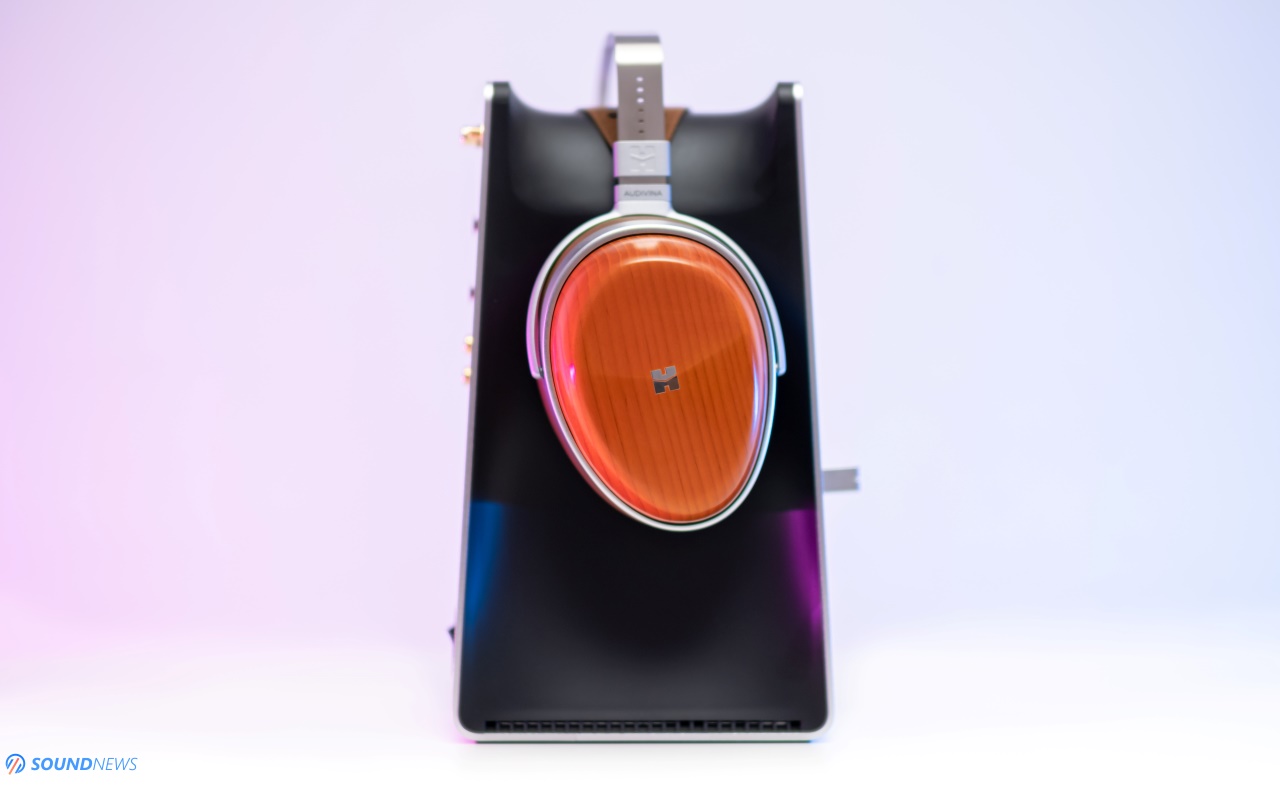
II. Resolution & Transparency
Living for quite some time with R2R ladder DACs and fully discrete amplifiers, I started appreciating their skills a lot more than those of chip-based converters and op-amp-based amplifiers. The music we are listening to doesn’t need to be overly sharp to keep you engaged, it doesn’t need to be overly mellow or clinical, it needs to stay true and natural sounding. If you’re hunting micro-details, EF600 won’t impress you right away as a Topping, SMSL, or Benchmark Media headphone amplifier would do. The leading edges are softer on the EF600, and the contours are there, but not to an extent to draw your attention, the micro-level information is also there, but again, not to such an extent to lock your hearing abilities. EF600 isn’t as possessive and aggressive sounding, it doesn’t try to tell you the full story in 5 minutes, it tries to add a few chapters and make it more captivating. Eventually, you’ll start understanding the EF600 after a few days of use. It’s like a good friend who gives life pieces of advice that you’ll understand when bad luck hits you, remembering that he was right from the beginning. Music is not about sharpness, leading edges, or micro-level information, those are small parts of a complicated story. Music is about having experiences, about stopping for a few minutes and reconfiguring yourself, rewiring you to feelings that were lost over the years. R2R DACs and fully discrete amplifiers were made to never interfere with the original signal, trying to be as natural and life-like as electronically possible. Although, the sharpness won’t impress you, nor the leading edge or micro-level information, once you calm your spirits, you’ll realize that every nuance and detail was there from the start, you just didn’t want to focus on that, instead immersing yourself into the music.
After listening to I Don’t Live Here Anymore by The War On Drugs (Qobuz / Tidal) I knew that EF600 would start blooming after several tracks and sure enough, the guitar plucks felt so zingy and natural, without making me lower the volume. The voice was powerful and deep, but it never interfered with the percussion work, slowly flowing towards me. It loses a bit of resolution and sparkle to a regular DAC/Amp made from off-the-shelf components, but for me it just shifts priorities, focusing on the innards of the music and less so on its contour. You feel the weight of every note, the meat starts printing before your eyes with EF600 by your side, something that will rarely happen on D/S DACs.
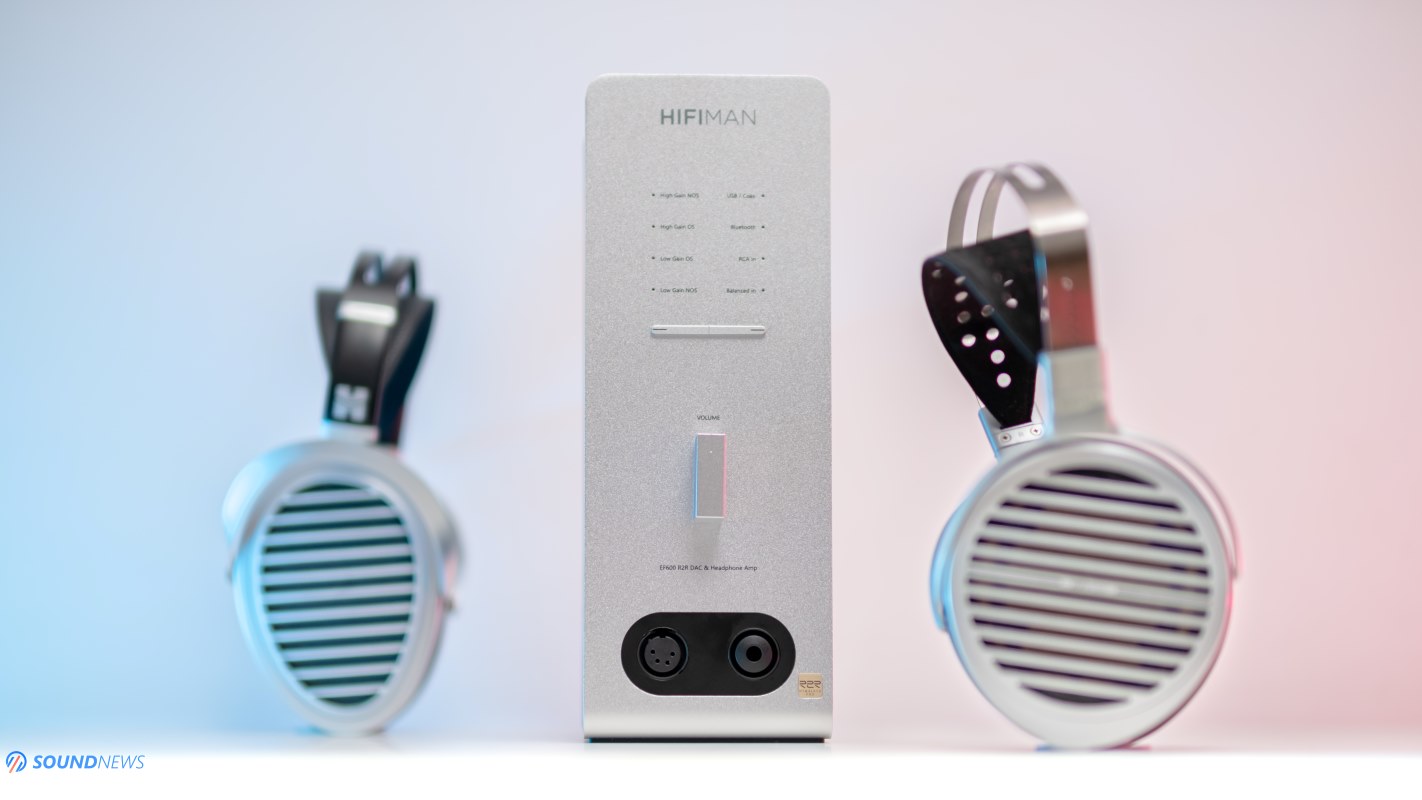
III. Power Output
When Spine by Myrkur (Qobuz / Tidal) started playing via a pair of Arya Organic and Ananda NANO, I realized that I could barely use a third of its power. It was clear to me that I was dealing with a sleeper headphone amplifier that disguised itself as a regular DAC/Amp combo. Even with high dynamic range tracks and DSD recordings, I was barely going higher than a 1/3 on its volume pot. You need to be extra careful when powering it on with sensitive loads attached such as Focal or Grado headphones and I won’t be surprised that even on the low-gain position, the 9 O’clock volume position would be at the threshold of being painful to listen to with such headphones. Remember, EF600 was primarily designed to be used with HiFiMan headphones, unlocking their sleepy dynamics along the way.
I must confess that most of my listening was made via its low-gain position and regardless of what headphones I was using, I never went past half its power output, except for one headphone. It’s close to impossible to go over its noon position with dynamic or planar headphones, except if you’ll be driving the mighty Susvara, Abyss AB-1266, DCA Stealth, or Expanse.
I’m never going lightly with the units that are being tested around here and usually, they all undergo at least several weeks of burn-in, noise tests, and then tens of pairings just to get a stronger impression of their overall performance. I’m also testing their limits power-wise, usually with bass-intensive music that puts massive stress on the output, headphone amplifier stage, and power supply. Some world-renown amplifiers were shutting down with the Susvara, and others were heavily distorting even at 95dB, but as years passed by, higher performance amplifiers started appearing, specifically tailored to deal with heavy loads, and yet, only some of those were doing proper justice to the Susvara. One of the most hyped amplifier releases of late was the Holo Audio Bliss KTE and while it sounded great with everything, it was clipping and losing control with the Susvara. Dynamics didn’t go as high as I liked them to be and the bass notes weren’t slapping my eardrums, seriously limiting my engagement factor with the Susvara.
While EF600 costs just a fraction of the Bliss KTE, there is slightly more energy and life emanating from the Susvara, all while having more headroom on tap. It’s no secret why Susvaras appears in the marketing materials of EF600. This tall monolithic fellow drives the Susvara close to their maximum potential, more so than a few pricier amplifiers. The scale of the music isn’t shrinking like my bank account after a new flagship headphone release, the sound is still radiating with life, trying to impress with the scale, flow, and powerful dynamics. There were a few headphone amps that were doing justice to the Susvara, but you needed to shelve bags of pennies for that to happen. Thanks to units like EF600 and Aune S17 PRO, we can finally enjoy the best planar headphones without spending a fortune on a matching amplifier and DAC.
Susvara will still scale with a better DAC and amplifier and that tells you a man who invested several years of his life and a good fortune to make them sing the way I like it. I’m sure the newest HiFiMan PRELUDE class-A amplifier and the EF1000 will push the Susvara to higher peaks performance-wise, but the EF600 is already more than decent in my view, it’s somewhere in between impressive and hard to beat considering its price.
Unsurprisingly, it offered a high-quality bass, a warmer midrange to the usual NFCA, PLFC, and THX-AAA amplifiers, while slashing huge portions of brightness from the top octave. HiFiMan cans are usually lit up, trying to impress with a clean and highly resolving treble region and it seems EF600 is smoothing out the upper treble, for a more enjoyable listening experience.
After moving to its high-gain, my usual listening position with the Susvara will sit at the 1 O’clock position, always leaving a substantial amount of headroom on tap. With DSD recordings I was sometimes arriving at the 3 O’clock position, but it was still refusing to hit the brakes dynamics-wise.
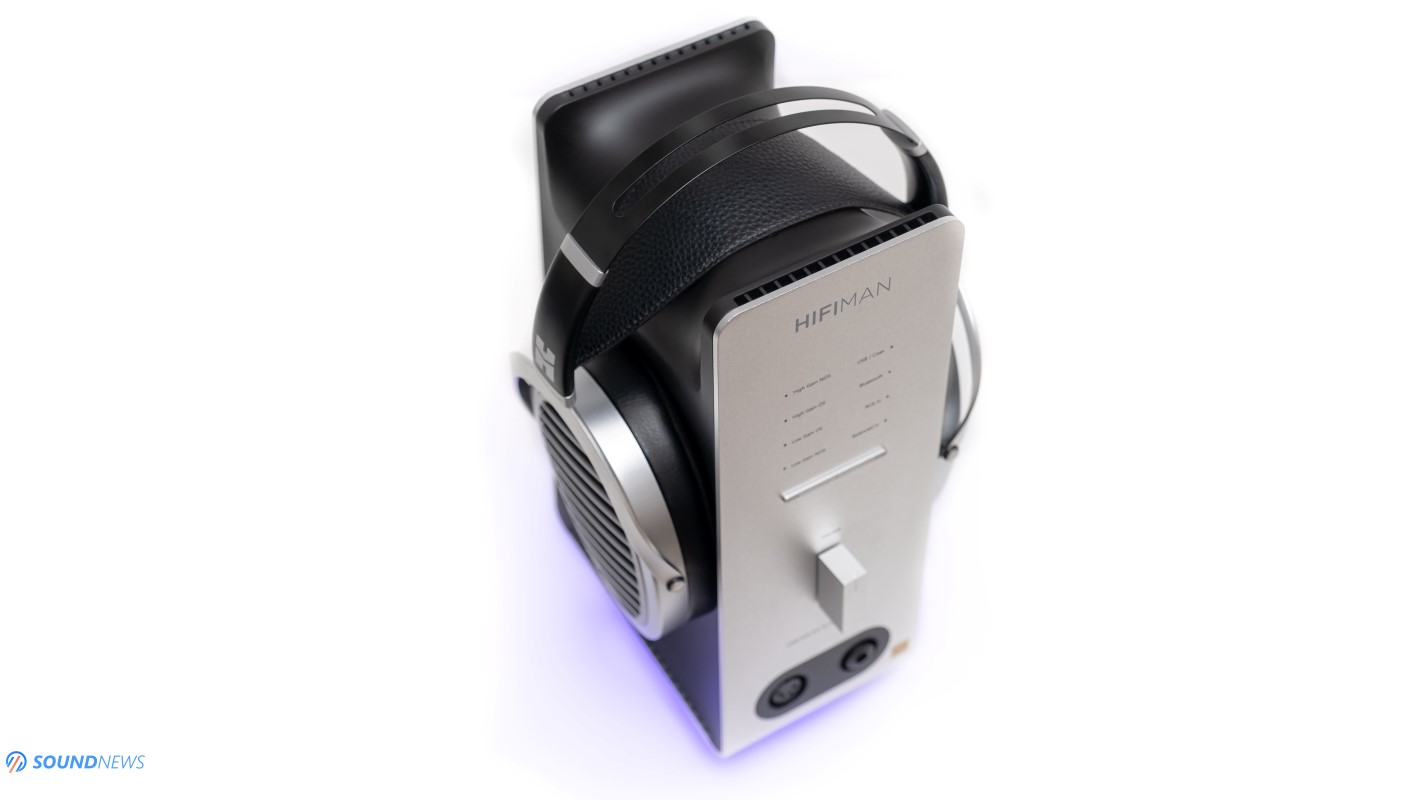
IV. Transient Response & Dynamics
With Susvara in particular, EF600 wasn’t the hardest slamming amplifier out there, nor the fastest-sounding one. Aune’s S9C offers a similar power on tap, edging it in terms of speed and natural decay of the notes and although it was decent with the Susvara, EF600 offered ever so slightly more oomph and meat on the bone. Aune S17 PRO is in my humble opinion better sounding than both units, providing more power, a nicer diaphragm control, and a much stronger kick down low, at the cost of working just as a headphone amplifier. Generally speaking, EF600 won’t impress a Formula 1 driver when it comes to fast transients, slowly transitioning from relaxed to fast tempos and from muted to high dynamics. This isn’t a lightning-quick-sounding device no matter from what angle I’m looking at it and sometimes electronic music won’t sound as nimble and snappy, but this happens mostly with low-sensitivity headphones.
Going back to the Ananda Nano and to any version of the Arya, then out of a sudden EF600 will feel light-footed, brimming with life and pushing punchy dynamics in the lowest octaves. It loses a bit of grunt and control with heavy loads, but with less demanding headphones, EF600 will sound effortless, without stressing itself or the listener for that matter. After having it for more than a month, and successfully finishing the burn-in period, EF600 improved most in the heft, punch, and low-end mass and not so much in the speed department. R2R DACs aren’t the fastest-sounding units out there, having a longer signal path than a regular chip-based unit, so maybe its mellow and relaxed character is coming exactly from there. It won’t be my top choice for modern bass-intensive music and high BPM (beats per minute) tracks, but it would certainly be one of my top choices for instrumental music filled with sounds from nature. It worked great with blues, jazz, classical, orchestral work, and rock and not so much with electronic music.
Gateway to the Spirit World by Sorin & Shamil (Qobuz / Tidal) is a low BMP psychedelic chillout masterpiece that excites every cell in my body. Filled with oriental vibes, voodoo-inducing beats, and sounds coming from outer space that like to play with my imagination, every beat carries a higher force than usual and a longer trail. You can feel a higher pressure hitting your timpani and a very low 20 Hz rumble every second or so. On traditional delta/sigma DACs and NFCA headphone amplifiers that low-intensity rumble feels lightweight and less spooky in a way, but the EF600 makes it surreal and grand sounding. The bass hits hard and decays slowly…like having two subwoofers hanging around your ears. Long story short, EF600 can work with electronic beats, as long as we’re dealing with slow BPM tracks.
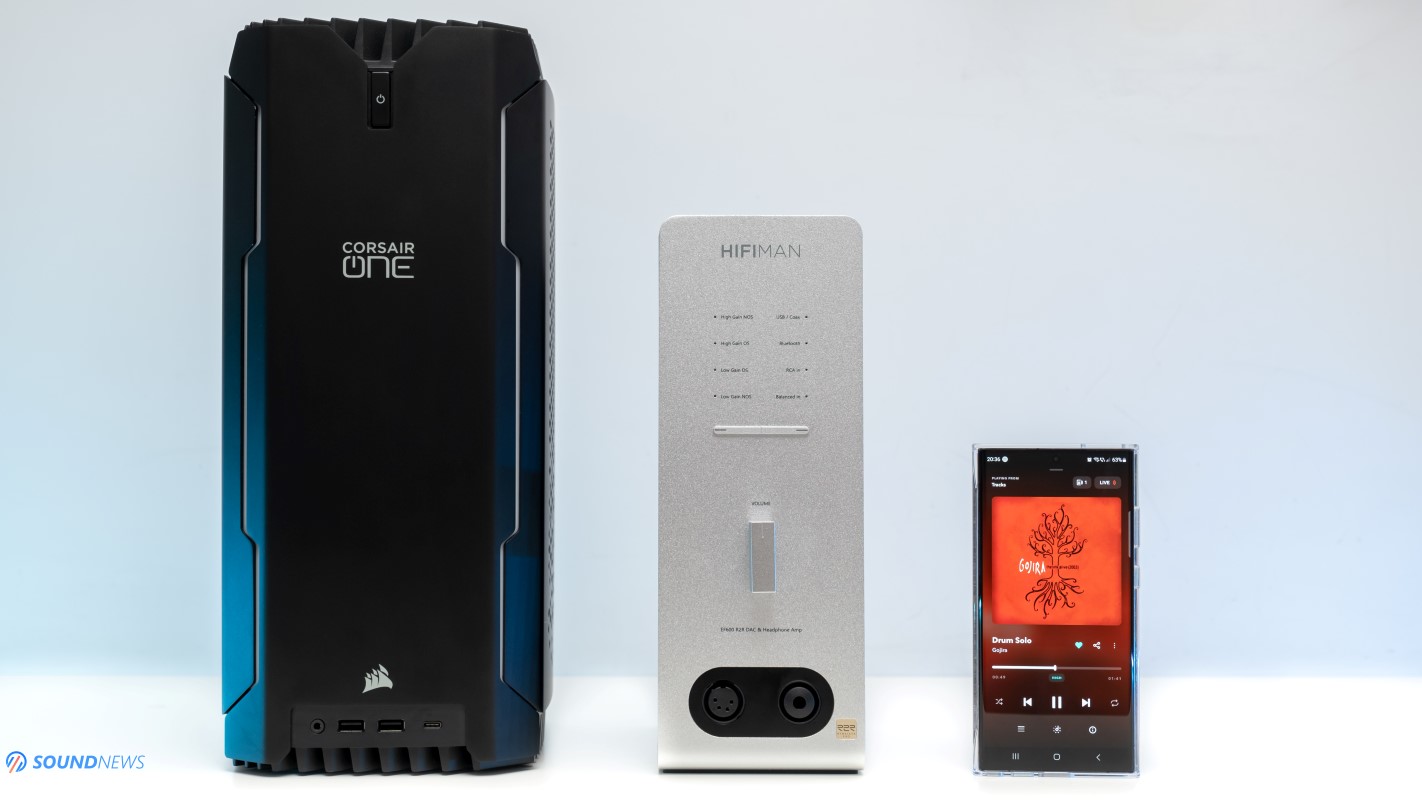
V. Soundstage & Imaging
While the thunder gods weren’t pleased with its pace, rhythm, and timing on fast-executed tracks, I believe it’s the other way around when portraying a picture in front of the listener. From the latest all-in-one combo released below one kilo buck, the Aune S9C stood out as having a natural tonality which was so easy to like, especially in one to two-hour listening marathons. S9C was also one of the few units that didn’t sound inside my head, instead going with an airier presentation, unshackling the sounds and letting them go wild. While on the technical level, EF600 doesn’t feel as impressive when focusing on the music alone, on the grand scale of things (depth and 3D stereo image), it edges out the S9C, becoming deeper and more holographic.
This change of presentation going from airy to holographic isn’t coming from their amplifier stages, but mostly from their digital to analog sections, which I must admit is smoother and bigger sounding on the EF600. Playing with R-2R DACs for quite some time, one of their stronger skills is not the soundstage per se, but their depth and note separation, as if there are additional empty spaces between each musical note. Instead of hearing a musical note one after another, you hear a rise, a sustain, a decay, a short pause, and then another rise, sustain, and decay. The music is no longer plain, playing from your left to right, it gets close and far from your face, and you get a nicer separation not only on a 2D plane but on a 3D one. Once you experience a very well-made R2R DAC on a capable acoustic chain, it’s close to impossible to go back to an oversampling delta/sigma DAC. It’s hard explaining by mere words what you are going to hear/feel, you still need to experience that for yourselves, understanding that a simple stereo track can sound like a binaural recording in the right circumstances. Maybe EF600 and its Himalaya PRO DAC architecture isn’t very technical or linear sounding, but it’s playing in the big boy DAC category when it comes to scale, depth, and stereo image.
The sounds of Mother Earth always intrigued me. My great-grandparents lived in the woods, far from the village. Visiting them as a kid was always exciting because I knew I was going to learn something new about the wonders and dangers of the woods. My great-grandmother once asked me to walk barefoot, touching the earth and grass. I’m still doing it today when I feel stressed out and I must admit, I’m feeling rejuvenated and alive after doing it. When I’m listening to any album by Ajeet Kaur that focuses on the sounds of the sea, wind, mountains, and forests, I always remember my great-grandparents who lived with these sounds their entire lives. Ajeet’s Haseya (Qobuz / Tidal) is an album destined to relax you completely and if you never practiced spiritualism or yoga, well, let’s just say that Ajeet will offer you free lessons. Starting with the first track, you will be surrounded by the sounds of nature flowing all around. Ajeet has gentle, yet uplifting vocals throughout, always putting you into a meditative state. The sounds are simply…floating midair and there is a weird feeling that there is more void space and silence than sounds themselves, a feeling that I’m getting only with R2R designs. In the grand scale of things, it was made for music like this.
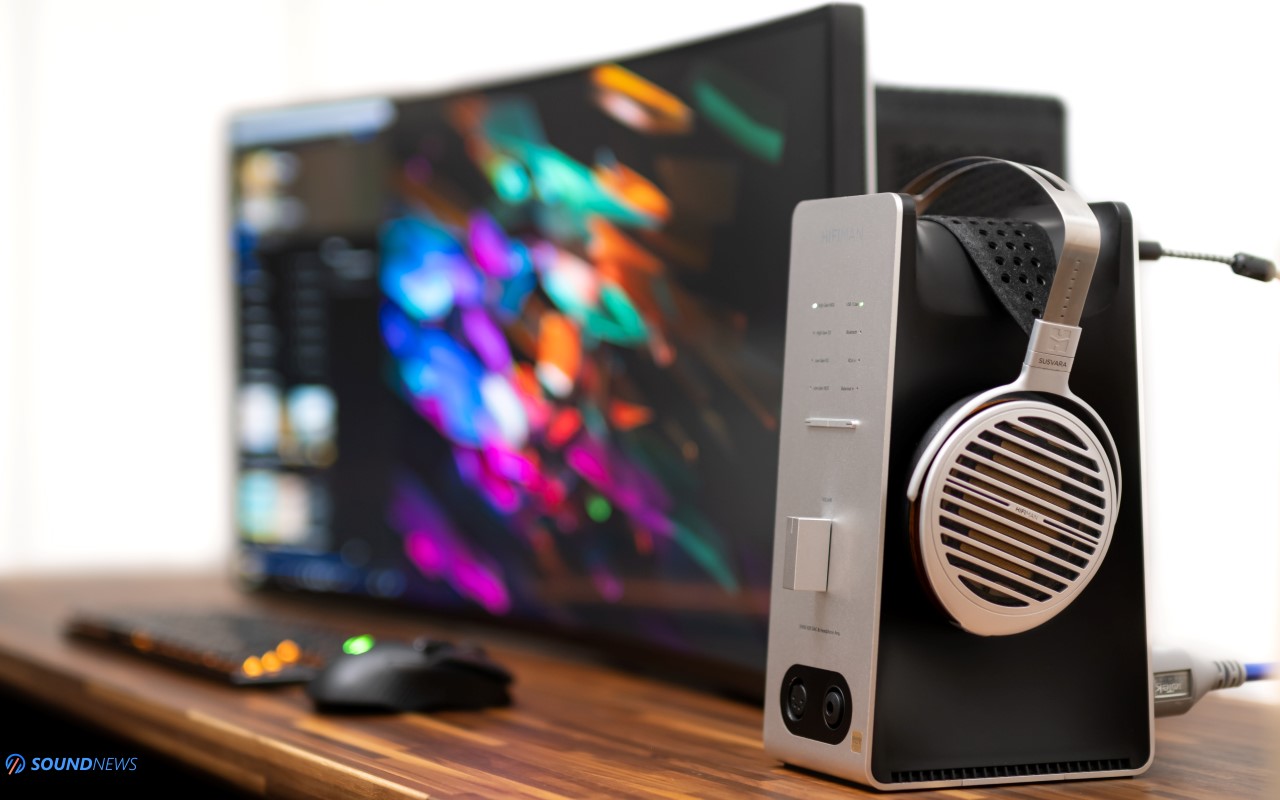
Frequency Response
VI. Bass
Let’s drop the Susvara and focus on headphones that people would want to pair with the EF600. Ananda Nano and Arya Stealth stepped into the light and for no reason I started listening to Poison (95EQ) by The Prodigy (Qobuz / Tidal), which made me appreciate electronic music back in the day when I was still a kid. NANO brought forward impressive quantities of bass; I’ve got more bass than I was expecting. On top of that, 20 Hz rumbles accompanied by snares and cymbals brought forward the best from the NANO. While soft and round, the bass heft put a wild smile on my face. It wasn’t the most controlled, nor the fastest or cleanest bass out there, but it was utterly fun at the end of the day. It worked great with bass-intensive tracks and it was equally impressive with smooth and relaxing music and I do believe it does justice to a wide variety of music. Even the simplest blues and jazz tunes felt boosted, adding a substantial kick down low as if musicians forgot their notes and started playing modern funk instead. If you’re hunting for distortion-free bass notes even at high SPL levels, that is a little elevated from the rest of the FR, then EF600 would sure bring a sun ray to your head-fi battle station.
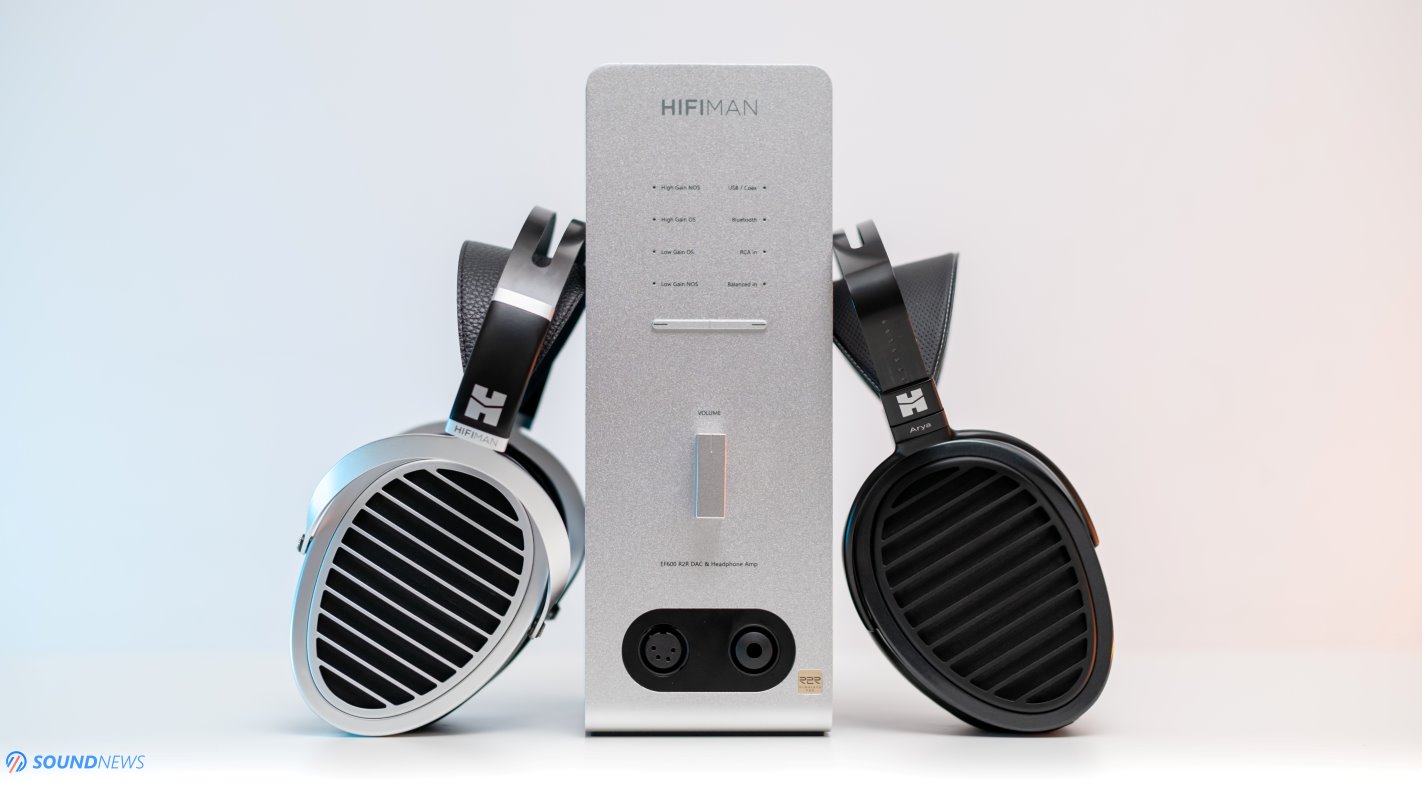
VII. Midrange
When I see an R2R ladder DAC per channel and a high-current, fully discrete headphone amplifier that (most probably) works in a Class-AB operation considering its moderate heat dissipation, then I will automatically think about lots of meat on the bone, sweetness, warmth and a life-like rendition of the vocals, wind and string instruments. The bass was truly outstanding with vintage electronic tunes, especially the initial kick and the heft that followed felt quite visceral, but the region that conquered my heart was the midrange region. If you’re hunting for a rich midrange, then from all digital-to-analog conversion techniques, I believe that R-2R units would impress you the most, especially if we’re talking about units that have the non-oversampling (NOS) option. If you add a good streamer in front of the EF600 bypassing a regular PC, then the quality of the midrange will improve substantially, sounding clearer, more tactile, defined, and involving than ever before. You can’t remain unimpressed with its soul-grabbing midrange that is slightly thicker and sweeter sounding than that of its smaller EF400 sibling. It feels more saturated in this region, like boosting the colors on a digital picture. It did proper justice to my blues and jazz collection mostly due to a natural midrange rendition.
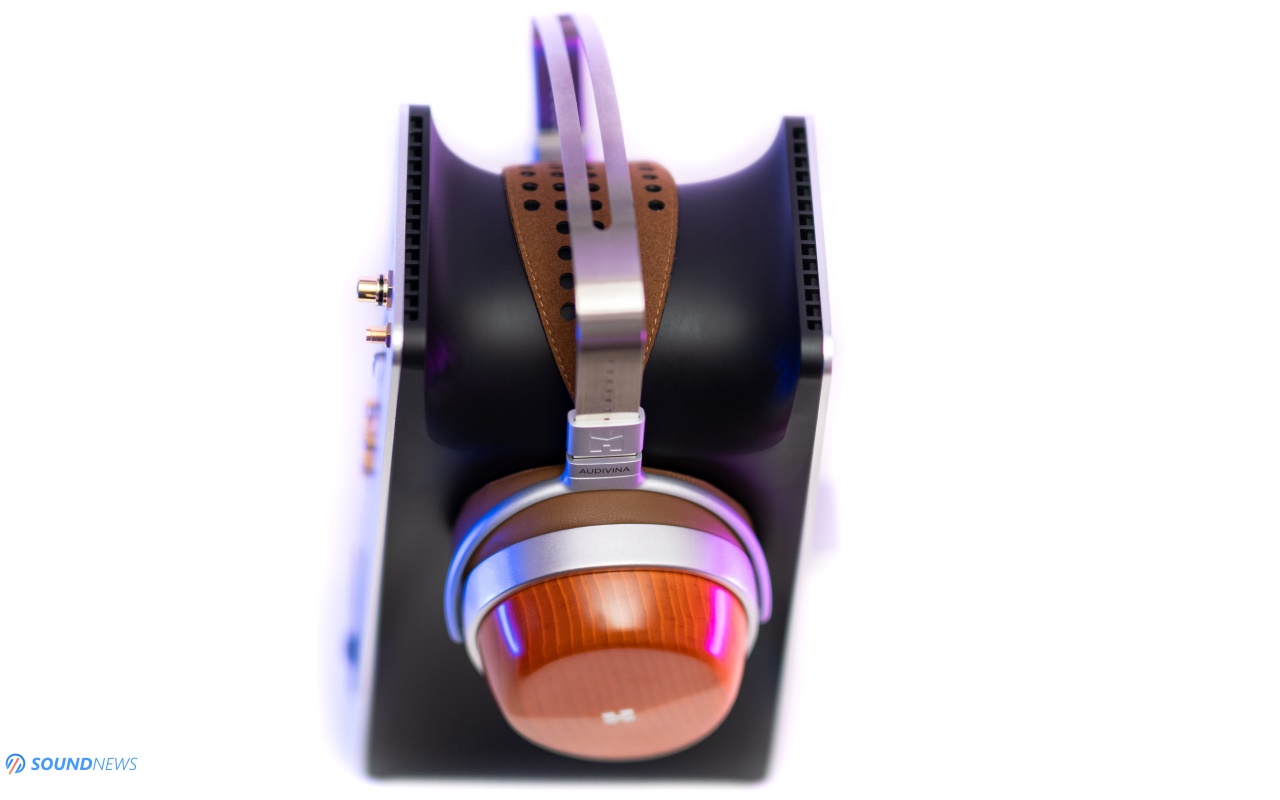
VIII. Treble
We are getting a soft, smoothed-out, and quite relaxing treble performance regardless of the music or headphones used. Knowing that most HiFiMan headphones put a slight accent on the treble delivery, strong leading edges, and a defined treble in general, EF600 works as a natural cure for all of them. The glare from the upper treble is no more, gently removing energy excess and an unnatural ringing. Although people enjoy the sound of entry-to-mid-level HiFiMan headphones, especially when comparing their technical prowess with similarly priced dynamic headphones, a careful system matching is still necessary for prolonged listening sessions, taming down the brightness, while adding more life and energy in the midrange region. For headphones like Deva PRO, HE400S, and Edition XS, HiFiMan created the EF400 and for higher-tiered headphones such as Ananda NANO, Arya Stealth/Organic, and HE1000SE, HiFiMan now offers a clear upgrade path with the EF600, improving its technical performance, adding more power on tap, all while taming down the brightness for a more relaxed listening experience.
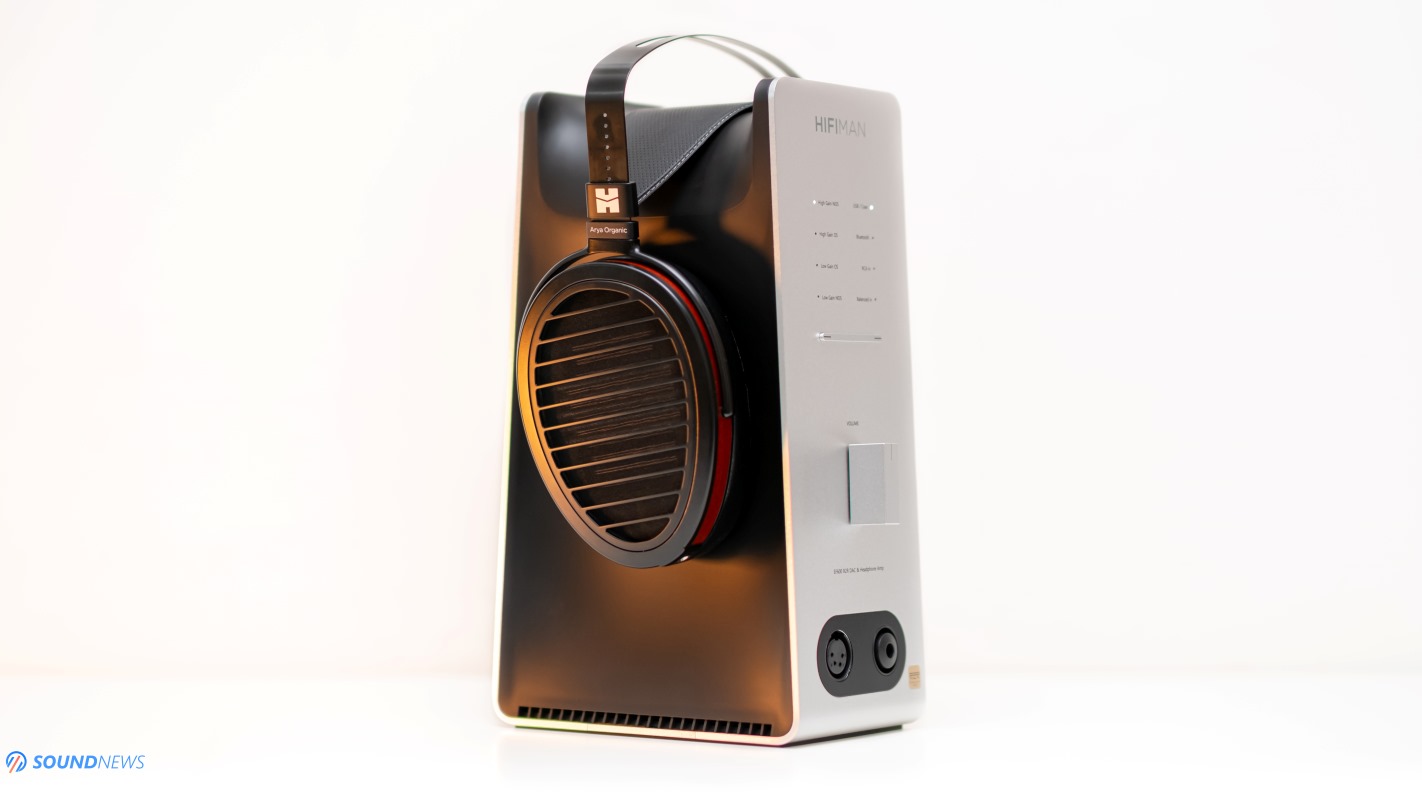
My Conclusion
I wanted to include at least a comparison in this review, but as I was putting more listening days on the EF600, it became clearer to me that comparing an R2R DAC and discrete amplifier stage with a chip-based converter that might use op-amps in the signal path, would feel like comparing apples to oranges. The only unit I know of that can be compared with the EF600 is Aune’s S9C, which also uses a linear transformer, a dual DAC configuration, a fully discrete headphone amplifier section, plus a similar Bluetooth receiver is also on board. Undeniably, the S9C looks more traditional with its horizontal stance, having headphone jacks on its left, a big volume wheel to the right, and a colorful display in the middle. S9C looks nicer in my view and sounds fabulous if you like off-the-shelf delta/sigma converters.
EF600 isn’t as technical sounding, it isn’t as revealing, nor as fast, tight, and controlled sounding, but there is something else drawing your attention. The tone of the music is bolder, the sound is thicker and weightier, especially in the bass, and the midrange will suck you in with its sweet and warm tonality. The biggest difference lies in the treble region, where EF600 won’t offend with its smoothed-out treble delivery. EF600 likes to play a bit more with big orchestras and live recordings, where the sound wanders all around your head even past an arm’s reach. The sound is deeper and bigger on the EF600, it has a more rounded tonality and a more enjoyable timbre, albeit at the cost of not being so technical and resolving. It’s a very different flavor and it’s not about which one is better or worse, it’s about which one will be more to your liking. If you own a substantial number of HiFiMan headphones and a few planars of competitor brands, then the extra oomph of the EF600 will surely give you a helping hand, but if you own all sorts of IEMs, portable headphones, dynamic cans, and only a planar or two, then I honestly believe that the S9C will be a better choice.
If you take a closer look at the prices of oversampling delta/sigma DACs and R2R ladder DACs, then you’ll observe that the custom nature of the latter makes them considerably costlier, using considerably less off-the-shelf parts and instead going with hundreds of discrete components. My experience with R2R DACs isn’t limited to a brand or two, I tried the ones costing an arm and a leg coming from all corners of the world and generally speaking, good R2R implementations are very costly and occupy lots of desktop space. Taking into consideration that I’m describing the sound of a $799 unit that does so much more than just converting zeroes and ones into sound waves, that still uses an oversized linear transformer and discrete components in its amplifier stage, I think EF600 isn’t only a great starting point for those wondering about the R2R game, but a long-lasting middle ground that won’t send you into a upgraditis infinitum quest.
EF600 had that effect on me, stopping me from whatever I was doing, reclining my chair, getting an old drink, and immersing myself in the music, never thinking about the eight chapters that I previously wrote. It compels you to enjoy music, not just mindlessly listening and analyzing it. Sometimes all we need is some milk and honey to feel better and I think that EF600 is very much like that. I have a strong feeling that EF600 will cannibalize the sales of entry-to-mid-level R2R DACs and discrete headphone amplifiers, getting a well-deserved Silver Award as a token of our appreciation!

You can get it directly from HiFiMan’s web store right here, or you can get it from the Apos Audio store right here, which has been supplying us with loaner units for quite some time now. No matter where you’re getting it, please leave a comment below and tell us your story behind EF600, and consider subscribing to our YouTube channel for additional content. That’s all for now folks and hopefully, I’ll see you this week-end (27-30 October) at the Audio Video Show in Warsaw, Poland.
PROS:
- Having a tiny footprint EF600 can be used in the most crowded head-fi battle stations
- A true all-in-one unit that also acts as a headphone stand, just add a source and a pair of cans and you are ready for a stage dive
- Symmetrical looking all around, solid CNC machined case that gets barely warm
- The R2R DAC section sounds smooth, organic, and sweet
- The headphone amplifier section can fully drive the hardest loads out there, even the mighty HiFiMan Susvara.
- Sounds bold, weighty, mellow, and soft most of the time
- Caters more to music lovers than to snobby audiophiles
- Make it smooth and organic via NOS mode or cleaner and slightly more controlled via OS mode
- Highly dynamic, punchy, and alive sounding
- Sounds airy, deep, and holographic, outperforming even a few pricier units in this department
- Lacks digital glare and listening fatigue, having the smoothest treble rendition I have experienced below one kilo buck
- Doesn’t lose Bluetooth signal even with two concrete walls between it and the sender, LDAC sounded close to a wired connection
- An outstanding value!
CONS:
- Not very technical or highly resolving sounding
- Not suitable for sensitive IEMs or portable headphones, the noise floor goes up and there is little to no volume freedom
- Works best with HiFiMan creations due to their tuning, but it’s not the most universal unit
- Not the most attractive-looking, the volume knob is the first thing I would change.
ASSOCIATED EQUIPMENT:
- DACs: HiFiMan EF600, Chord Electronics DAVE, Rockna Wavedream Signature XLR, Gold Note DS-10 PLUS, Aune S9C
- Wireless Streamer & Music Server: Rockna Wavedream NET 4TB, EverSolo DMP-A6
- DDCs: Singxer SU-6, Matrix X-SPDIF 3
- Headphone Amps: HiFiMan EF600, Trafomatic Primavera, Enleum AMP-23R & HPA-23RM, Ferrum OOR & HYPSOS, Burson Soloist 3X GT, Flux Lab Acoustics Volot, Aune S17 PRO
- IEMs: HiFiMan Svanar, Westone Mach 50, Hiby ZETA, Meze Rai Penta, FiiO FX15 & FH9, 7Hz Timeless AE, Kinera Skuld & others
- Full-sized headphones: HiFiMan Susvara, Arya Organic & Stealth, Audivina, Ananda NANO, Meze Elite & 109 PRO, Erzetich Charybdis & Phobos V.2021, Audeze LCD-5 & LCD-4, Sennheiser HD800S, Kennerton Rognir (planar) & Vali, Apos Caspian, Sendy Peacock & Apollo, HarmonicDyne Elite & Poseidon, Moondrop Venus & others
- Preamps: Chord Electronics Ultima 3 Pre
- Power Amps: Chord Electronics Ultima 5 Power, Burson Timekeeper 3X GT (x2)
- Loudspeakers: KEF Reference 3, Raidho TD2.2 (incoming)
- DAC/Amps: xDuoo XD05 PRO, Shanling H7, FiiO Q7, Topping G5
- DAPs: HiBy RS8, FiiO M15S, Shanling M6 Ultra
- Interconnects: Crystal Cable Reference2 Diamond (x3), QED Reference (x2), Topping TCX1 (x2)
- USB Cables: Supra USB Excalibur (x2), Chord C-USB, Matrix Hi-Fi USB
- HDMI Cables: Audioquest Diamond DBS, Supra 8K HDMI
- Speaker cables: Kimber PR8, Audioquest Type4
- Power Cables: Crystal Cable Reference2 Diamond (x3), Isotek EVO3 Premier (x2), iFi Audio SupaNova (x2)
- Balanced Isolation Power Conditioners: PLiXiR Elite BAC1500 (stereo setup), KECES IQRP-1500 and P14 (headphone setup)
